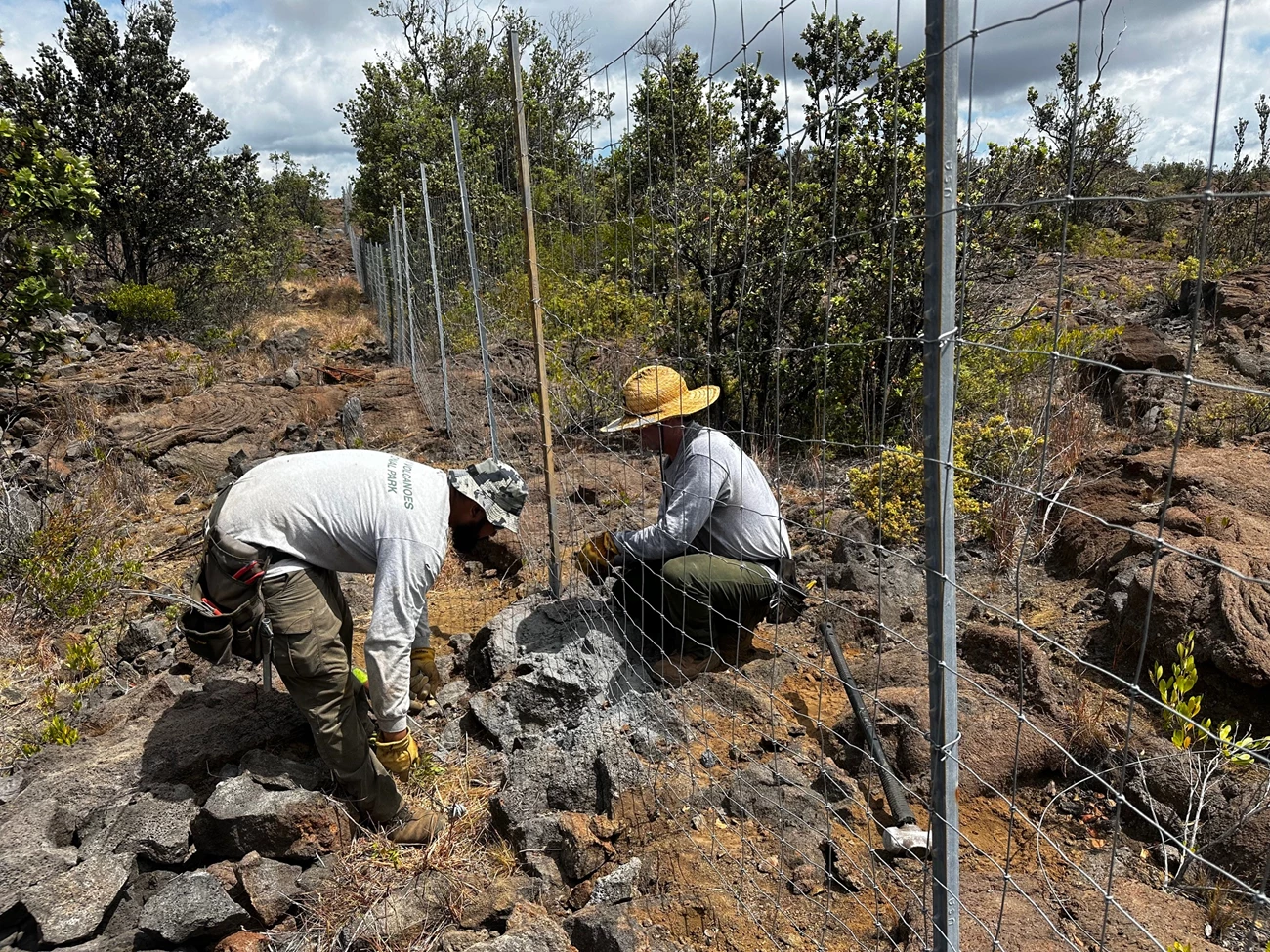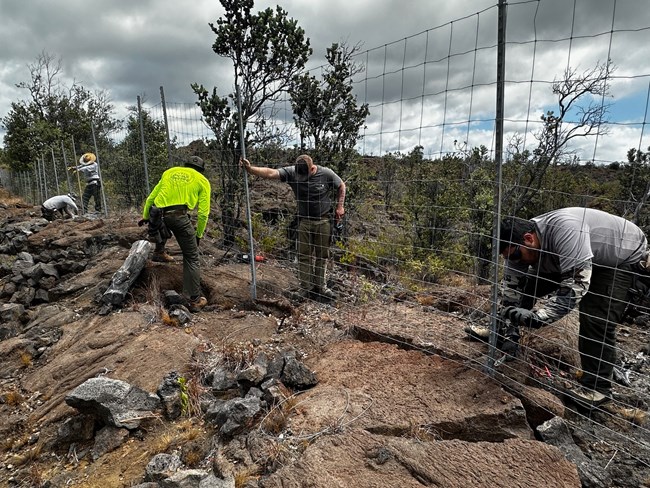Last updated: April 18, 2025
Article
Beyond the Volcanoes: The Great American Outdoors Act’s Vital Role in Protecting Biodiversity in Hawaii

NPS
Three national parks in Hawaiʻi, Hawaiʻi Volcanoes, Haleakalā, and Kalaupapa, are renowned for their breathtaking landscapes, unique ecosystems, and rich cultural significance. Every year, millions of visitors, both from the United States and around the globe, are drawn to these special places looking for inspiration, solace, and a connection with nature. These parks are more than just beautiful destinations; they are living laboratories of biodiversity and hold deep cultural importance for Native Hawaiian communities.
Thankfully, the Great American Outdoors Act (GAOA) provided a much-needed lifeline. This landmark legislation represents the most significant investment in park infrastructure in more than 50 years. While GAOA won't solve all of our maintenance challenges, it is making a substantial difference in addressing some of our most critical needs.

NPS
Here’s why, maintaining these natural wonders presents significant challenges. For decades, the National Park Service (NPS) faced a growing backlog of deferred maintenance and repairs. Much of the infrastructure in our parks, including fencing crucial for protecting vulnerable ecosystems, dates back to the 1970s. This aging infrastructure wasn’t designed to handle the relentless forces of nature, leading to deterioration and putting valuable resources at risk.
Here in Hawaiʻi, GAOA funding is being used to rehabilitate up to 64 miles of perimeter exclusionary fencing across Hawaiʻi Volcanoes, Haleakalā, and Kalaupapa National Parks. These fences are not just barriers; they are essential tools for protecting native ecosystems and watersheds from the destructive impact of non-native animals.
The threat posed by non-native animals in Hawaiʻi is significant. Introduced cattle, goats, sheep, and pigs, lacking natural predators, cause widespread devastation. Through trampling, browsing, and bark stripping, they decimate vulnerable ecosystems, inhibit forest regeneration, and lead to the loss of sensitive species.
The fencing acts as a vital defense against this destruction. It prevents these animals from accessing and further damaging vulnerable areas, giving native plants and animals a chance to recover and thrive. It's important to remember that these fences protect more than just the general ecosystem. Over 50 federally listed threatened and endangered species and their habitat are safeguarded within these boundaries. Ionic species such as the endangered ʻāahinahina (silversword) would disappear from the planet with protection.

NPS

NPS
This project is not just about protecting plants and animals; it's about preserving and restoring the cultural heritage of Hawaiʻi. Native Hawaiian communities have a deep connection to these lands, and maintaining and enhancing the integrity of these biocultural resources is paramount. By ensuring the effectiveness of perimeter fencing, we are safeguarding the long-term health and fostering the recovery of these ecosystems, as well as the cultural practices that depend on them.
The benefits of this GAOA project extend far beyond the park boundaries. By protecting these natural treasures, we are also supporting the local economy. In 2023, tourism to Hawaiʻi Volcanoes, Haleakalā, and Kalaupapa National Parks contributed an estimated $280 million in total economic output to the national economy. The $8.7 million GAOA-supported fencing investments at the parks supported an additional 100 jobs and contributed over $22 million to the nation's economy. Investing in our parks is not only improving visitor safety and recreation, but also an investment in our communities.

NPS
This project will replace and upgrade fencing, some of which is on extremely difficult terrain, requiring NPS to transport materials via a helicopter. We're also repairing greenhouses and related structures to support revegetation efforts in areas impacted by construction. This multifaceted approach demonstrates our commitment to comprehensive restoration and long-term sustainability.
While GAOA provides critical funding, the work of maintaining our national parks is ongoing. Continued investment is essential to ensure that these treasured places remain vibrant and accessible for generations to come. Thanks to GAOA, we are making significant strides in protecting the natural and cultural heritage of Hawaiʻi, ensuring that the beauty and wonder of these parks continue to inspire and enrich the lives of millions.
